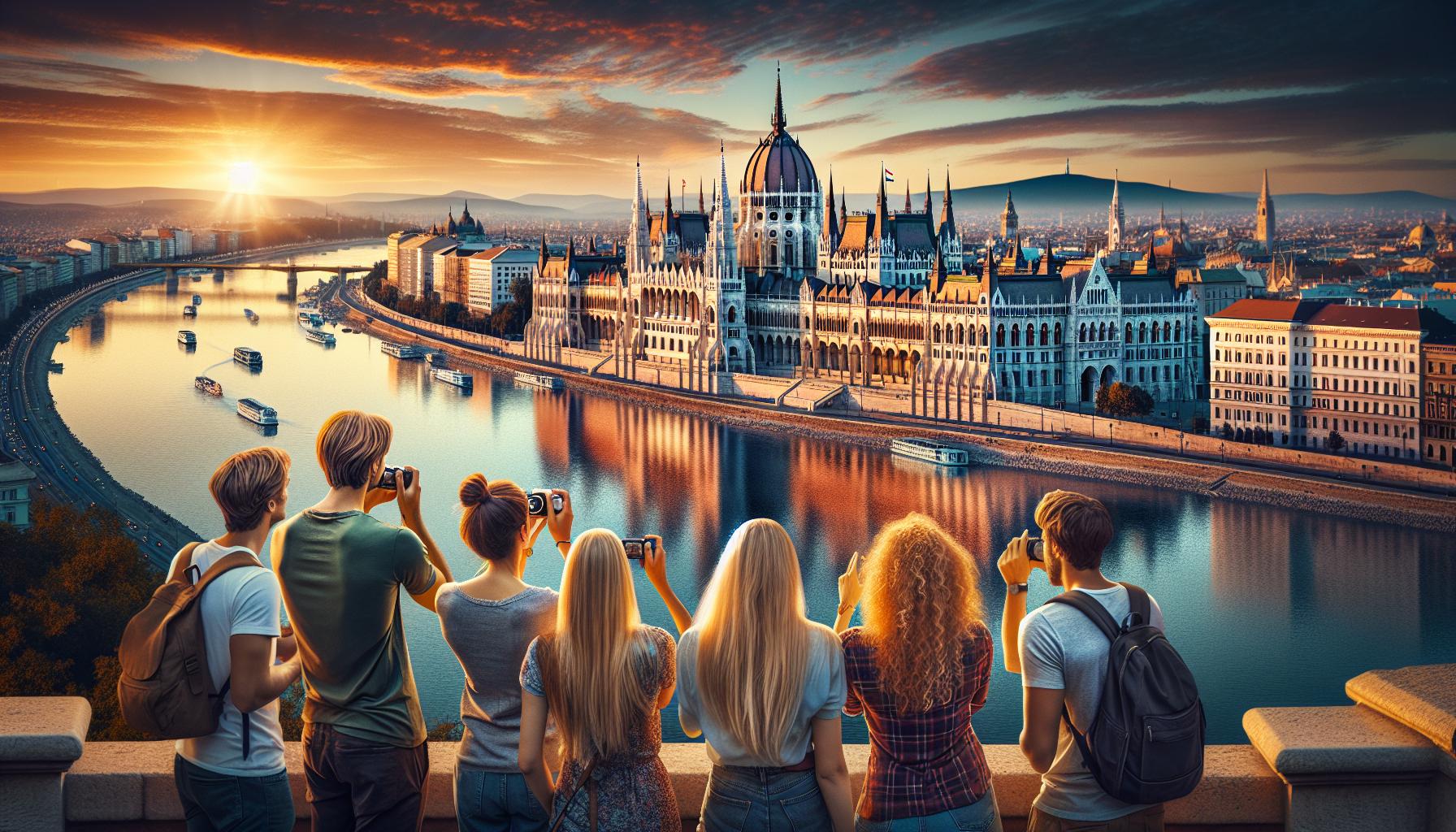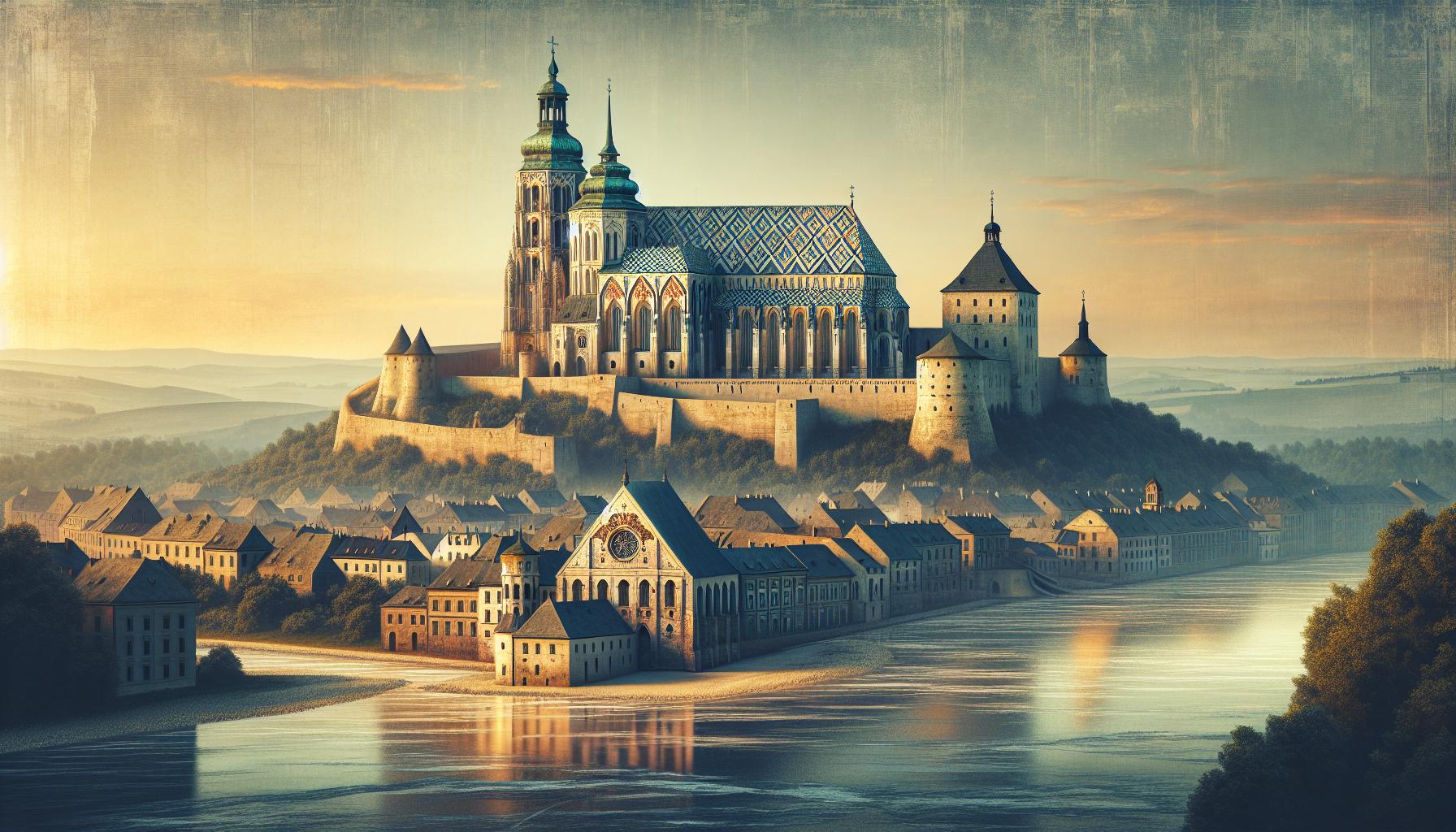
What to See in Budapest: 15 Must-Visit Attractions & Hidden Gems (2024)
Budapest stands as a mesmerizing jewel in Eastern Europe where history meets modern charm. This stunning Hungarian capital split by the mighty Danube River offers visitors an unforgettable blend of architectural masterpieces thermal baths and vibrant cultural scenes that’ll make anyone’s jaw drop.
From the majestic Buda Castle perched high above the city to the stunning Parliament Building reflecting in the river’s waters Budapest’s attractions deserve a spot on every traveler’s bucket list. Whether it’s soaking in the legendary Széchenyi Baths sampling traditional Hungarian goulash in the Great Market Hall or sipping coffee in one of the city’s famous ruin bars visitors will find themselves enchanted by the city’s unique character and undeniable charm.
Best Time to Visit Budapest
Budapest experiences distinct seasonal changes throughout the year, influencing visitor experiences and crowd levels. The optimal timing depends on weather preferences and specific events of interest.
Weather and Tourist Seasons
Budapest’s peak tourist season spans June through August, with temperatures averaging 77°F (25°C) and 12 hours of daily sunshine. Spring months (March to May) bring mild temperatures between 55-65°F (13-18°C) with fewer crowds at major attractions. Fall (September to November) maintains pleasant temperatures around 60°F (16°C) with reduced hotel rates. Winter temperatures drop to 35°F (2°C) with occasional snow, creating picturesque scenes at thermal baths and Christmas markets.
| Season | Temperature Range | Tourist Activity |
|---|---|---|
| Summer | 70-85°F (21-29°C) | Very High |
| Spring | 55-65°F (13-18°C) | Moderate |
| Fall | 50-60°F (10-16°C) | Moderate |
| Winter | 30-40°F (-1-4°C) | Low |
- Spring Wine Festival in May showcases Hungarian vintages at Buda Castle
- Sziget Festival in August attracts 400,000 music fans to Óbuda Island
- Budapest Wine Festival in September presents 100+ wineries at Castle Hill
- Christmas Market from November through December fills Vörösmarty Square
- Budapest Spring Festival celebrates classical music with 50+ performances
- Budapest Summer Festival hosts outdoor concerts at Margaret Island
| Event | Month | Location |
|---|---|---|
| Sziget Festival | August | Óbuda Island |
| Wine Festival | September | Castle Hill |
| Christmas Market | Nov-Dec | Vörösmarty Square |
Historic Landmarks in Buda

Buda’s historic landmarks showcase the rich architectural heritage of Budapest’s western district. These medieval marvels perch atop Castle Hill, offering panoramic views of the Danube River.
Buda Castle and Castle Hill
The UNESCO World Heritage site Buda Castle dominates Castle Hill with its 18th-century Baroque architecture. The castle houses the Hungarian National Gallery displaying artworks from medieval times through the 20th century. The Budapest History Museum occupies the southern wing, featuring exhibits chronicling the city’s past from Roman settlements to modern times. Underground tunnels beneath the castle complex, known as the Castle Labyrinth, extend for over 1,000 meters through limestone caves formed by thermal springs.
Matthias Church
Matthias Church stands as a masterpiece of Neo-Gothic architecture dating back to the 14th century. The church features distinctive diamond-pattern roof tiles in orange yellow green creating a mesmerizing mosaic effect. Inside, vibrant frescoes cover the walls while stained glass windows filter colorful light throughout the space. The church played host to several royal coronations including Charles I of Hungary in 1916.
Fisherman’s Bastion
Fisherman’s Bastion combines fairy-tale architecture with spectacular city views across the Danube. The structure features seven turrets representing the seven Magyar tribes that founded Hungary in 895. Its neo-Gothic terrace provides unobstructed views of the Parliament Building Margaret Island the Pest side. The white limestone construction gleams in sunlight creating perfect photo opportunities throughout the day. During summer evenings, the bastion illuminates creating a magical atmosphere against the Budapest skyline.
Must-See Sights in Pest
Pest, the eastern side of Budapest, features iconic landmarks that showcase the city’s architectural grandeur. The flat terrain of this district makes it easy to explore the notable attractions on foot.
Hungarian Parliament Building
The Hungarian Parliament Building stands as Europe’s third-largest parliament building, stretching 268 meters along the Danube’s eastern bank. This Neo-Gothic masterpiece features 691 rooms, 88 statues of Hungarian rulers, and 242 sculptures on the walls. Guided tours reveal the ornate interior, including the Hungarian Crown Jewels, the Main Staircase adorned with 16th-century red marble, and the Dome Hall where the Holy Crown of Hungary resides. The building illuminates at night, creating a mesmerizing reflection on the river’s surface.
St. Stephen’s Basilica
St. Stephen’s Basilica ranks as Hungary’s largest church, accommodating up to 8,500 people simultaneously. The 96-meter-tall structure matches the height of the Parliament Building, establishing Budapest’s maximum building height restriction. Its neoclassical architecture contains notable features including the Holy Right Hand relic of St. Stephen, Hungary’s first king. The basilica’s dome observation deck provides 360-degree views of Budapest, accessible by elevator or 364 stairs.
Great Market Hall
The Great Market Hall operates as Budapest’s largest indoor market, spanning three floors of a restored 19th-century building. The ground floor houses fresh produce vendors, butcher shops, and traditional spice stalls featuring Hungarian paprika. The upper level presents traditional Hungarian embroidery, local wines, and authentic food stalls serving lángos and other regional specialties. The basement level contains fishmongers, pickle vendors, and specialty mushroom sellers.
Thermal Bath Culture
Budapest’s thermal bath culture dates back to the Roman Empire, with over 100 natural hot springs feeding its renowned bathhouses. These historic spas combine therapeutic wellness with stunning architecture to create unique cultural experiences.
Széchenyi Thermal Bath
Széchenyi Thermal Bath stands as Europe’s largest medicinal bath complex, featuring 18 pools spread across a neo-baroque palace in City Park. The outdoor pools maintain temperatures between 27-38°C (80-100°F) year-round, creating an enchanting atmosphere as steam rises from the water during winter months. Indoor facilities include 10 saunas, steam rooms with thermal water from 970 meters deep containing minerals such as calcium, magnesium bicarbonate sulfate. The complex accommodates 1,700 visitors simultaneously across its indoor therapeutic pools, drinking wells for mineral water consumption.
Gellért Baths
Gellért Baths operates within the art nouveau Gellért Hotel, showcasing mosaic floors, stained glass windows Roman-style columns from 1918. The complex contains eight thermal pools ranging in temperature from 26-40°C (79-104°F). Its main hall features carved pillars, galleried corridors ornate ceramic tiles produced by the Zsolnay factory. Thermal waters emerge from 10 springs beneath Gellért Hill, rich in magnesium, calcium hydrogen-carbonate chloride. The facility offers therapeutic massage services, medical treatments specialized wellness packages in its historic setting.
Parks and Public Spaces
Budapest’s green spaces provide peaceful retreats from the urban landscape with historic gardens, recreational facilities, and cultural attractions.
Margaret Island
Margaret Island spans 2.5 kilometers in the middle of the Danube River, serving as Budapest’s central recreational park. The 238-acre island features medieval ruins including a 13th-century Dominican convent, a musical fountain, and a professional running track that circles the island. Visitors explore the island via electric carts, four-person bikes, or leisurely walks through rose gardens containing over 8,000 plants. The Palatinus Bath complex offers 11 pools including thermal springs, while the Water Tower houses art exhibitions in an Art Nouveau structure. The island’s Japanese Garden creates tranquil spaces with exotic plants, fish ponds, and waterfalls.
City Park
City Park encompasses 302 acres behind Heroes’ Square, featuring Budapest’s most diverse outdoor attractions. The park contains Vajdahunyad Castle, a replica structure showcasing Hungary’s architectural evolution through different styles from Romanesque to Baroque. The Budapest Zoo houses 1,072 animal species in Art Nouveau buildings from 1912. Visitors ice skate on Europe’s largest outdoor rink during winter months at the City Park Ice Rink. The park’s boating lake transforms into thermal pools at Széchenyi Baths, where 18 pools offer year-round relaxation amid neo-baroque architecture.
Local Food and Wine Scene
Budapest’s culinary landscape combines traditional Hungarian flavors with modern gastronomy. The city’s restaurants range from Michelin-starred establishments to casual eateries serving authentic local dishes.
Traditional Hungarian Dishes
Hungarian cuisine centers on hearty dishes with rich flavors, distinctive spices, and paprika-based preparations. Gulyás (goulash), a robust beef soup with vegetables, represents Hungary’s national dish. Chicken Paprikash features tender chicken in creamy paprika sauce served with nokedli dumplings. Lángos, a deep-fried flatbread topped with sour cream and cheese, serves as a popular street food. Töltött Káposzta presents stuffed cabbage rolls filled with minced meat and rice in a savory sauce. Dobos Torta showcases Hungarian pastry expertise with its chocolate buttercream layers topped with caramel.
Best Wine Bars and Restaurants
Budapest’s wine scene celebrates Hungary’s 22 wine regions through sophisticated venues and traditional cellars. Borkonyha Wine Kitchen pairs regional wines with contemporary Hungarian dishes in an elegant setting. Drop Shop Wine Bar offers 100+ Hungarian wines by the glass alongside artisanal cheese plates. Onyx Restaurant presents refined Hungarian cuisine with two Michelin stars in the historic Gerbeaud House. Bock Bistro Budapest combines modern gastronomy with wines from the renowned Villány region. DiVino Wine Bar specializes in young Hungarian winemakers’ selections near St. Stephen’s Basilica.
Evening Entertainment
Budapest transforms into a captivating nightlife destination after sunset, offering unique entertainment options that blend history with modern attractions.
Ruin Bars
Budapest’s ruin bars occupy abandoned buildings transformed into eclectic drinking establishments. Szimpla Kert, located in the Jewish Quarter, pioneered this concept in 2001 with its mismatched furniture, local art installations, and vibrant atmosphere. Other notable ruin bars include Instant-Fogas Complex, spanning multiple floors with diverse music genres, and Mazel Tov, which combines Middle Eastern cuisine with architectural preservation. These venues feature exposed brick walls, vintage decorations, and open-air courtyards, creating distinctive social spaces that attract both locals and tourists.
River Danube Cruises
Evening cruises along the Danube River showcase Budapest’s illuminated landmarks in their full glory. The 1.5-hour dinner cruises depart from Vigadó Square, offering panoramic views of the Hungarian Parliament Building, Buda Castle, and Chain Bridge. Premium vessels like the Legenda and Europa provide multi-course Hungarian dinners accompanied by live music. Specialty cruises include wine-tasting experiences featuring selections from Hungary’s wine regions. The boats pass under six bridges, each lighting up the river with distinctive patterns that enhance Budapest’s nighttime skyline.
Conclusion
Budapest stands as a remarkable destination where history meets modern charm. From its majestic architecture and thermal baths to its vibrant culinary scene and nightlife the Hungarian capital offers something for every traveler.
Whether exploring Buda’s historic landmarks strolling through peaceful parks or experiencing Pest’s architectural wonders visitors will find themselves immersed in a city that beautifully preserves its past while embracing the present. A trip to Budapest promises unforgettable memories filled with cultural discoveries unique experiences and breathtaking views that showcase why it’s one of Europe’s most captivating cities.




